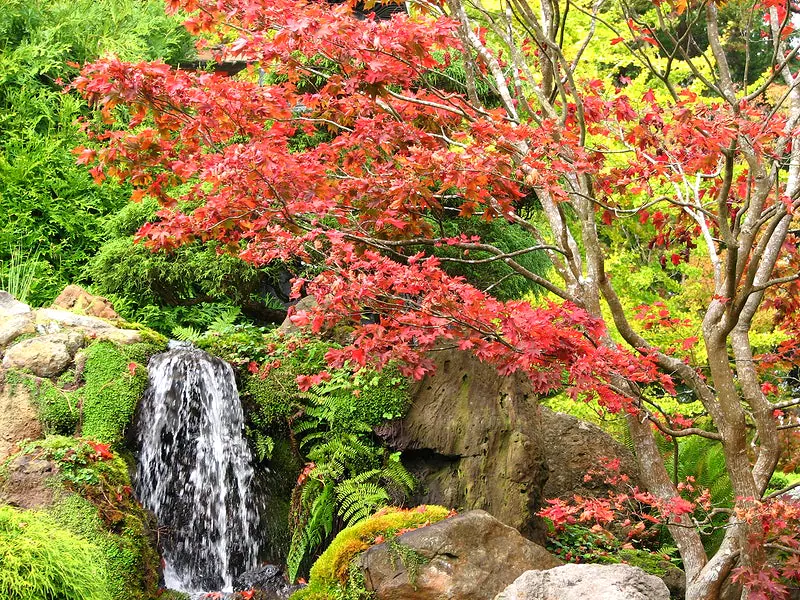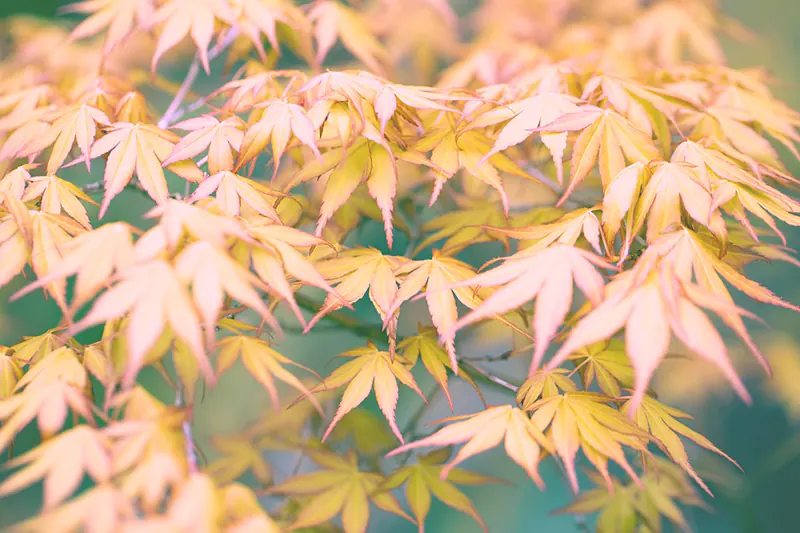Waterfall Japanese Maple | Bonsai Guide
Acer Palmatum
The Japanese maple is a beautiful variety of trees that turn into stunning bonsai, especially the Waterfall Japanese maple. We’ll cover every aspect you need to know about growing this tree, from soil to pot and everything else. At the end of this care sheet, you’ll know whether the Waterfall maple is ideal for you, how to take care of it, and how to keep its leaves red as long as possible.
Table of Contents
Quick Waterfall Japanese Maple Bonsai Care Sheet
Here’s a quick care guide that briefly explains all the requirements you need to know before growing a waterfall maple bonsai.
Recommended soil
Well-draining soil, such as akadama with a mix of lava rock and pumice.
Watering
Water daily to multiple times during the day while growing or during hot temperatures. Ensure the water is Neutral or slightly acidic in pH.
Potting season
Repot every two years.
Shaping and pruning season
Prune twigs and shoots all through the year. Prune strong branches in autumn or summer. Use cut paste to prevent fungal infections.
Light
Requires plenty of sun, but placed in an area that doesn’t receive direct light.
Fertilizing
Use a solid and organic fertilizer, containing all the needed micronutrients.
Propagation methods
Seeds, air layering, or cuttings during the summer months.
Pests and diseases
Aphids and verticillium wilt are the most common pests or diseases you’re likely to encounter.

How to Care for a Waterfall Japanese Maple Bonsai
Here, we’ll explain the best soil mixture, watering pattern, and repotting times for a Waterfall Japanese maple bonsai. Additionally, we’ll cover in-depth explanations on pruning and shaping the Japanese tree and where best to keep it for optimal growth.
Best Soil
The best soil to use for your waterfall Japanese maple bonsai is a well-draining mixture. One of the best options you can purchase for this is an Akadama mixture containing pumice and lava rocks to allow for quick draining.
If the soil you use isn’t well-draining, you’ll likely water the bonsai less. This lowered frequency will help prevent any damage from overwatering that would occur. Watering less with denser soil won’t affect the tree too poorly, as it’s still exposed to the needed amount of water. However, if possible, use the recommended soil mixture.
Watering
Japanese maple bonsai trees require plenty of watering. Often you’ll need to water the tree each day; however, on hot days or during the warmer months, you may need to do this several times per day. Ensure the soil is evenly watered but never waterlogged as this will cause severe damage.
When watering, a slightly acid or neutral pH is best. Avoid using any water with a basic pH.
Repotting
Repot your waterfall maple every two years into a well-draining soil mix. The tree has quick-growing roots that quickly fill the pot within two years.
As the roots regrow at a quick speed, you’ll need to prune them carefully. Use a chopstick or pencil to separate the roots and make it easier to cut them. To prevent any infection or disease in the area, ensure the scissors or shears are sharp and clean.
Shaping And Pruning
To shape the tree, use thin wire to bend the branches in the desired direction slowly. Be careful during this princess, as the wire can easily cut into the tree. For best results, use a thin, covered wire with a decent level of stiffness.
Pruning can be done your round if you’re only clipping the shoots and twigs. For bigger branches, only cut them during the summer or autumn months to allow the tree time to heal. When cutting large branches, use a cut paste to help protect the tree from fungal infections.
When pruning leaves, prune all of them during the growing season. This action will encourage a more refined set of leaves to grow and flourish. As this places stress on the tree, it’s best not to do it every year.
Location And Sunlight
The waterfall Japanese maple thrives best when kept in the shade but exposed to plenty of sunlight. Keeping the bonsai out of direct sunlight will protect its leaves. However, more direct sunlight will affect the vibrancy and color of the tree’s leaves.
Place the tree outside if possible, as this will benefit its growth. As long as the temperature is below 85°F, you can keep the tree in direct sunlight without fear of damage.
Fertilizing
Use solid organic fertilizers that provide all needed micronutrients. Follow the product’s instructions for dosage, as this will keep the bonsai growing well. Combine the solid option with a liquid fertilizer once a week for quicker growth.
Propagation Methods
You can propagate this bonsai through cuttings, seeds, and air layering. Whichever method you use will grow a new tree.
Pests And Diseases
The Japanese waterfall maple is prone to sap-eating aphids. These pests can harm your plant, but regularly mist your tree with water, a simple anti-insect solution.
Considerations for Growing an Indoor Waterfall Japanese Maple
Growing a waterfall maple indoors is not recommended but can be done if you’re well-prepared.
Sunlight
Ensure this bonsai is by a sun-facing window, as it requires plenty of sunlight each day. For part of the day, a partially shady area is best, as it will protect the tree during warm weather.
Temperature
To keep the tree in temperatures of 85°F if you’d like to keep it in direct sunlight. Keeping the tree in direct sunlight will help its leaves stay vibrant and red.
We have a detailed bonsai tree care guide with all the relevant information. Check the guide out here!

Common Issues When Caring For a Waterfall Japanese Maple Bonsai
With any bonsai you grow, you’re bound to encounter a few issues and setbacks. Here are two important aspects to keep in mind when keeping a waterfall Japanese maple bonsai.
Underwatering
The Japanese waterfall maple needs well-draining soil. On hot days, you may need to water the tree several times. Always check the soil’s dryness before watering the tree to prevent any overwatering issues.
Fungal Infections
Japanese maples are prone to fungal infections, especially when pruning the tree’s large branches. You need to use a cut paste that prevents any infections from preventing this. Additionally, the tree is prone to verticillium wilt, a fungal disease that’s lethal to your bonsai.

FAQs about Waterfall Japanese Maple Bonsai
We searched high and low to find the most commonly asked questions by bonsai lovers about the waterfall Japanese maple. We’ll explain how tall the tree grows, the best pruning methods, and how to keep your maple leaves red. We’ll also look at how wise it is to turn a waterfall Japanese maple into a bonsai tree.
Waterfall Japanese maples can reach a modest height of 6 to 12 feet. While this range is massive, it will begin to reach its maximum height as the tree ages. However, the bonsai of this tree is likely to stay around 60 to 80 inches tall once it matures.
The Japanese maple species are a great option to consider when purchasing or growing your own bonsai. The trees are beautiful and popular among growers due to their lack of needs. The Japanese maple is an excellent consideration for any newcomer to the world of bonsai.
Prune one-third of the twigs at the top of the bonsai’s canopy in a symmetrical design. Avoid snipping any branch that’s thicker than a pencil, as this will damage the tree’s growth. Cut the stubs back to the branch when pruning.
The smallest Japanese maple is a caperci’s dwarf. This tree has small green leaves and prefers a sunny or partially shaded environment. The tree can reach four feet tall after ten years of growth, and the bonsai is even more miniature.
To keep your Japanese maple bonsai leaves red, ensure that they receive some sunlight each day. If the plant receives too much shade, the vibrancy of the leaves will fade away.







